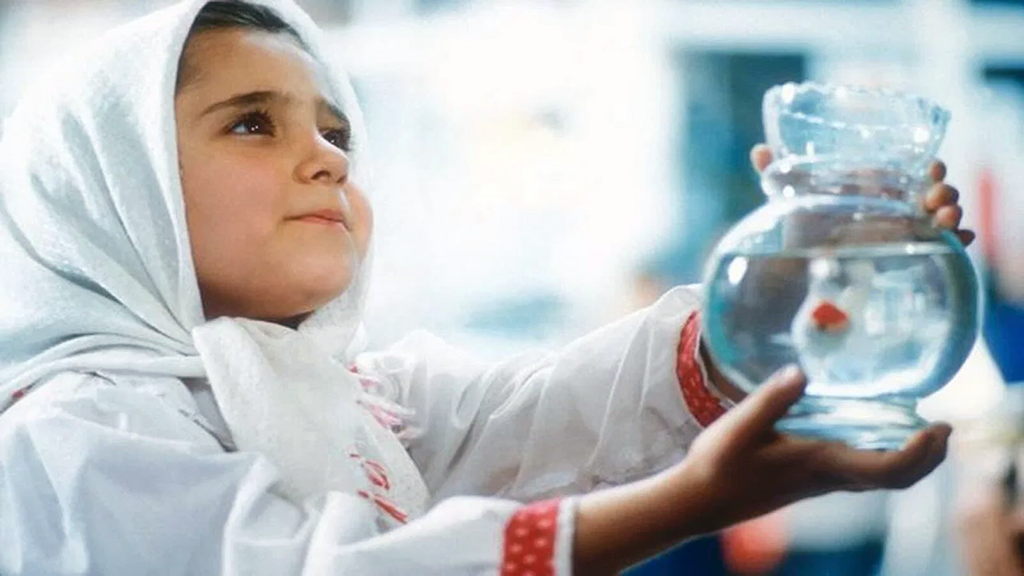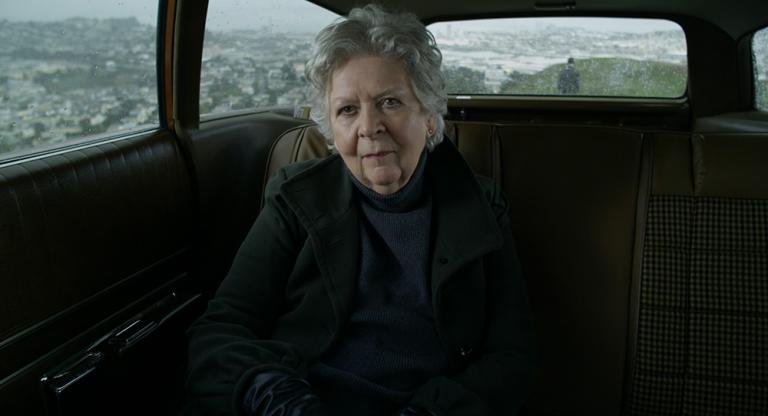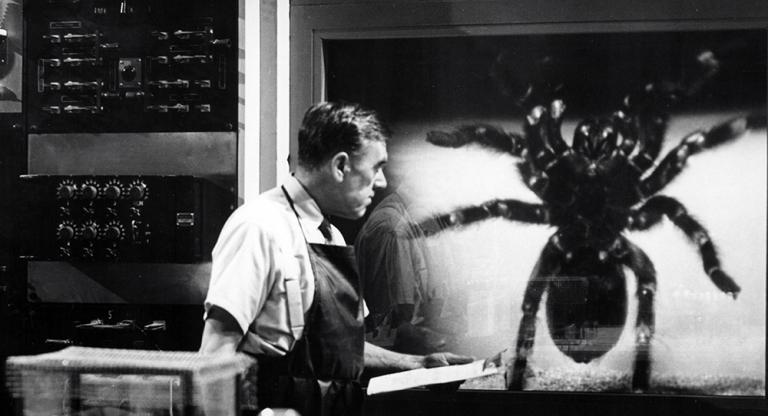Jafar Panahi’s feature debut, The White Balloon (1995), follows seven-year-old Razieh (Aida Mohammadkhani) as she tries to buy a new goldfish for the Iranian New Year. The seemingly easy venture takes several turns as she’s repeatedly distracted while walking alone through the streets of Tehran, managing to lose her mother’s 500 toman note twice. The first time the bill goes missing, it’s taken by a pair of snake charmers who mistake her fishbowl fund for a donation and taunt her with the snake, a strikingly tense scene in which Razieh’s distress transcends the deceptively simple plot. After the money is returned, she almost immediately loses it again, inadvertently dropping it down a metal grate. From there, the narrative trails her persistent efforts to retrieve the bill. Still, the intrigue lies in the smaller details arising from her interactions with a diverse cast of strangers along the way.
Razieh’s expressive face reveals her every emotion—pouting until her mother gives in to her wish (“ours are so skinny,” she insists about the goldfish in their backyard pond), or beaming with delight as she admires her new plump fish swimming in its bowl “as though it’s dancing.” The film resists sentimentality, instead cultivating an instinctive empathy by aligning us with her perspective. Razieh’s sulking doesn’t seem foolish, nor does her aspiration for a prettier goldfish feel trivial; from her point-of-view, we root for her desires and share in her grievances.
Scripted by Abbas Kiarostami, Panahi’s mentor, The White Balloon floats delicately between narrative and nonfiction. Radio broadcasts of the New Year countdown play in the background, serving as reminders of the fact that the film is unfolding in real time. Key characters briefly appear in the opening sequence, still anonymous, as if their later roles on screen arise by pure chance meetings. Shot on location with mainly nonprofessional actors and a minimalist plot, Panahi’s debut already reflects structural elements of neorealism. Over the course of his career, he would further dissolve the lines between reality and documentary, using meta-narrative approaches to address real-life oppressions in Iran, even while facing a filmmaking ban and imprisonment. If his first two features center on children (his follow-up, 1997’s The Mirror stars Aida’s older sister), it’s not completely arbitrary that his subsequent work would become more explicitly political. Even here, societal structures emerge through the marginalized characters depicted in the story. With child protagonists, encounters unfold with increased spontaneity and conversations more subtly reveal a political sensibility.
The White Balloon screens this afternoon, July 13, at Metrograph on 35mm as part of the series “Not a Film: The Films of Jafar Panahi.”



